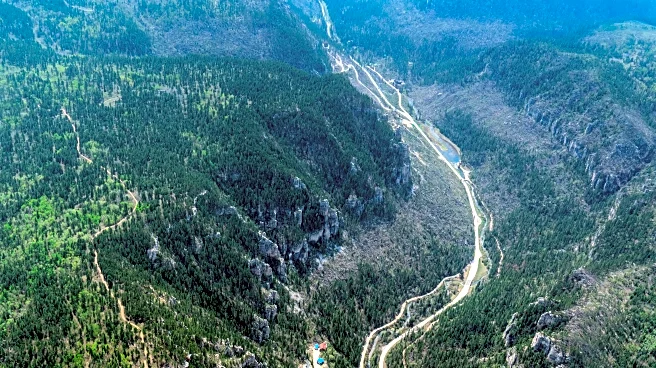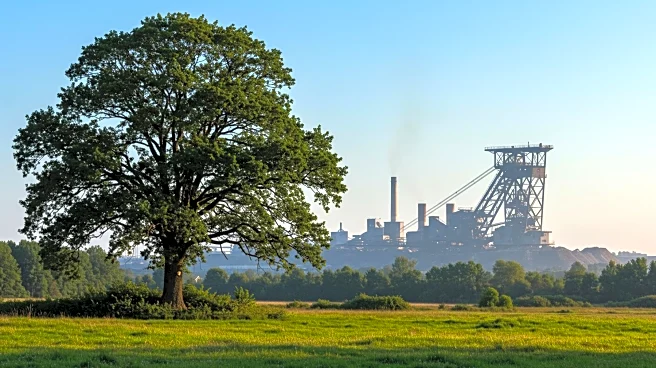Rapid Read • 8 min read
A renewed interest in gold mining is emerging in South Dakota's Black Hills, driven by gold prices exceeding $3,000 an ounce. This has led to proposals for new open pit mines and exploratory drilling sites, raising concerns among Native American tribes and environmentalists. The Black Hills, a region sacred to the Lakota Sioux, is facing potential landscape changes due to modern mining techniques that involve large-scale excavation and chemical processes. The existing Homestake mine, once a major gold source, is now closed, but companies like Dakota Gold are planning new operations that promise economic benefits but also pose environmental risks.
AD
The resurgence of gold mining in the Black Hills could significantly impact the local economy by creating jobs and generating tax revenue. However, it also threatens the region's environmental integrity and cultural heritage. The use of chemicals like cyanide in mining processes raises concerns about water contamination and irreversible landscape damage. Native American tribes, who have historical claims to the land, oppose these developments, highlighting the ongoing conflict between economic interests and cultural preservation. The situation underscores the broader debate over resource extraction and its consequences for indigenous communities and natural ecosystems.
Mining companies are moving forward with plans, including environmental studies and surveys to mitigate risks. Dakota Gold aims to start operations by 2029, potentially creating hundreds of jobs. However, opposition from tribes and environmental groups is likely to intensify, possibly leading to legal challenges or demands for stricter regulations. The state and federal agencies will play a crucial role in permitting and oversight, balancing economic benefits with environmental protection. The outcome could set precedents for future mining projects in culturally sensitive areas.
The renewed interest in Black Hills mining reflects broader economic trends, where gold is seen as a stable investment amid global uncertainty. This situation also highlights ethical considerations regarding land rights and the impact of industrial activities on sacred sites. The historical context of the U.S. government's seizure of the Black Hills from the Sioux adds complexity to the current debate, emphasizing the need for reconciliation and respect for indigenous claims.
AD
More Stories You Might Enjoy












